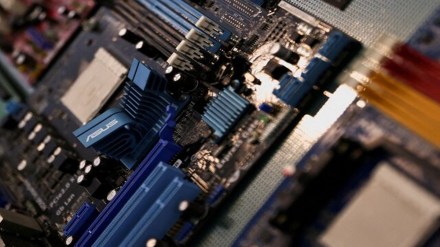In its trade negotiations with US, India will do well to draw lessons from Japan’s rise and decline in semiconductors to maintain its trajectory in electronics manufacturing.
India stands at a crucial juncture in its economic, trade, and strategic relations with the US. President Donald Trump’s key demand is reduction in tariffs, and he has consistently maintained that India charges US massive tariffs, due to which the latter can’t sell anything here. Over the weekend he claimed that India has agreed to cut its tariffs way down now because he has exposed it.
Trump is not known for diplomatic niceties. He made these comments when commerce and industry minister Piyush Goyal was in the US to work out the contours of a bilateral deal. His statement also came at a time US commerce secretary Howard Lutnick sought a “grand deal” with India on a broad scale and not product by product.
While it’s true that dealing with Trump is no picnic, India needs to be mindful of the fact that it cannot risk the recent gains it has made in a sector like electronics where it aims to become a part of the global value chain (GVC). With Trump announcing tariffs on China, Vietnam is already positioning itself as an alternative manufacturing hub, particularly in electronics. And average tariffs there are nearly half of India’s. If India seizes the opportunity, it could be transformative, akin to the liberalisation of 1991. The challenge, however, will be to navigate Trump’s diplomatic bluntness which may complicate the optics at home.
Whatever may be the compulsions, can India afford to risk the opportunities in electronics at this stage? International historian Chris Miller’s masterly book, Chip War, provides some insights, particularly with respect to Japan’s rise as a semiconductor power aided by the US and subsequent decline.
In the 1970s and 1980s, besides government policies, Japan’s semiconductor dominance was also fostered by a strategic partnership with the US. In the post-World War II period, the US sought to rebuild Japan’s economy as a bulwark against communism. As part of this effort, American companies and government agencies transferred critical semiconductor technology to Japan. IBM and other US firms provided training, technology licensing, and even contracts to Japanese suppliers, helping them develop their expertise. Furthermore, Japan’s access to the US market allowed its semiconductor firms to grow rapidly. Many American companies outsourced chip production to Japan due to its cost-effectiveness and high-quality manufacturing standards. This allowed Japanese firms to refine techniques and achieve economies of scale.
By the mid-1980s, Japanese semiconductor firms had overtaken American ones in key areas, especially memory chips. US firms like Intel, Texas Instruments, and Motorola struggled to compete with Japan’s efficiency and pricing. American policymakers and businesses grew alarmed, arguing that Japan’s government-backed approach was unfair and that its firms were engaging in dumping — selling chips below cost to drive competitors out of business. Under pressure from the semiconductor industry, the US administration launched trade negotiations with Japan. This led to the 1986 US-Japan Semiconductor Agreement, which imposed restrictions on Japanese chip exports, enforced price floors to prevent dumping, and required Japan to open its market to foreign firms. Although the agreement was meant to level the playing field, it marked the beginning of Japan’s decline in semiconductors.
Similarly, India’s recent rise in smartphone manufacturing is aided by the iconic US firm Apple. It is also helping the country integrate into the GVC. Apple’s vendors — Foxconn, Tata Electronics, and Pegatron — contributed nearly 70% of India’s smartphone exports, which reached `1.55 lakh crore during the April-January period of the current fiscal. The production-linked incentive scheme has played a vital role, creating an ecosystem that has propelled smartphones to become India’s second-largest exported product from 67th a decade ago.
The current strategy has focused on high import tariffs on electronics, including a 16.5% basic customs duty on smartphones and components from the US. However, experts are of the view that lowering these tariffs in a bilateral trade agreement with the US could further enhance India’s attractiveness as a manufacturing hub while strengthening its export potential.
As Miller has shown, Japan’s decline as a semiconductor powerhouse was not only due to its rigid focus on memory chips, but also because of US-imposed trade curbs in the 1980s. This void was subsequently filled by South Korea’s Samsung and Taiwan’s TSMC.
India must ensure that its trade negotiations with the US do not lead to a similar fate. By balancing tariff reductions with strategic policies that enhance local capabilities, India can maintain its trajectory as an electronics manufacturing hub.
The US-China trade conflict presents India with an opportunity to attract electronics manufacturing away from China. By offering reciprocal zero-duty tariffs in a trade agreement with the US, the government can secure three key advantages. Lower tariffs will ensure that companies such as Apple continue to find India attractive as a manufacturing destination. With US firms looking to reduce dependence on China, India can position itself as the next major electronics manufacturing base. India imports only about $1 billion worth of electronics from the US, so tariff reductions would not significantly harm local players.
Industry leaders, including the India Cellular and Electronics Association (ICEA), have advocated zero-duty treatment for smartphones, hearable and wearables, colour televisions, consumer electronics and appliances, lighting, etc. in trade negotiations, similar to India’s free trade agreements with Japan, Korea, and Asean countries. This, according to ICEA, could propel India’s electronics exports to the US from $10 billion now to $80 billion by 2030.
Navigating a trade deal with Trump would be a tightrope walk with all kinds of noises from lobby groups and strategic experts, but like Arjuna in the Mahabharata, the government must keep its eye on the prize — the rotating eye of the fish — and ignore the rest.
